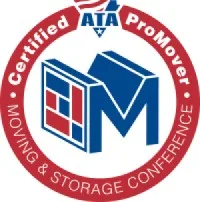About | FAQS
Planning To Move
- Begin by compiling a list of local moving companies that you intend to research.
- If your move is across state lines, ensure that each mover is licensed for interstate moves.
- Request a quote from each mover and verify their registration on the FMCSA website. Here is Ace Relocation Systems FMCSA registration.
- Ensure each mover has their own trucks and trailers, and follow the guidelines provided by the FMCSA on how to spot fraudulent moving companies.
- Gauge the reputation of each moving company by reading authentic customer reviews.
- Inquire about each company’s licensing and insurance coverage.
- Understand the logistics of each mover’s schedule. Ask about estimated delivery dates and how they assign crews at both the origin and destination of your move.
- Verify the payment structure of each mover, including their cancellation policy. Reputable moving companies typically do not require a deposit upfront.
- Select the moving company that best aligns with your specific needs and preferences. Remember, everyone’s moving requirements are unique.
For a more accurate and comprehensive estimate, we highly recommend opting for a home survey, which will provide you with:
- Personalized Assessment: A home survey allows us to see your belongings and assess the specific requirements of your move, resulting in a more tailored estimate.
- Transparent Process: The home survey allows you to discuss your needs with a moving expert and get a clear understanding of the services included in the estimate.
- Reduced Surprises: With a home survey, you’re less likely to encounter unexpected costs or issues on moving day.
For small local moves, some moving companies may provide estimates over the phone, but this method can overlook crucial details and result in potentially inaccurate estimates. At Ace Relocation, we prioritize Guided Video Surveys or In-Home Surveys. In most cases, a Guided Video Survey proves to be the quicker and more convenient option. If you answer yes to any of the following questions, most movers will likely require some form of home survey:
- Is your residence 1,500 square feet or larger?
- Do you have any large or bulky items, such as safes or pianos, that may require specialized handling?
- Does your home feature narrow hallways, doorways, or stairways that could hinder the movement of furniture?
- Will movers encounter difficulty parking a moving truck close to your home?
- Are you relocating out of state?
Many factors impact the cost of your move, including:
- Size and Layout of Home
- Furniture and Belongings
- Packing Requirements
- Appliances
- Accessibility
- High Value Items
- Time Constraints
- Bulky and Unusual Items
- Storage
- Regulations and Permits
The time it takes to move depends on several factors, such as the size of your move, where you are moving to, and the time of year. Talk to your Ace Relocation Move Coordinator about the timing of your specific move. We work hard to accommodate your move schedule requirements and preferences.
Data shows that most people move between April and September, knows as Peak Moving Season. Also, weekends tend to be busier than weekdays. With this in mind, if you’re looking for the most flexibility and availability in move dates and times, the winter months and week days are your best bet.
Square footage is calculated by multiplying length by width.
- Use a tape measure to accurately measure the length and width of the room. Ensure that objects are cleared away to obtain accurate measurements. Once you have the length and width, multiply those together to obtain your square footage.
- If a tape measure is unavailable, you can still measure the area of the room using your own two feet. Begin by measuring the length of your foot with a ruler. Walk heel to toe across the length of the. Multiply the number of steps taken by the length of your foot. Divide this number by 12 to estimate the distance from one wall to the other. Repeat steps those steps to measure the width of the room. Calculate the square footage by multiplying the length of the room by the width.
- Example: your foot measures 9” long. You take 20 heel-to-toe steps for the length of your room and 15 heel-to-toe steps for the width of your room. For the room length multiply 9 x 20 = 180, divide 180 by 12 = 15’. For the room width, multiply 9 x 15 = 135, divide 135 by 12 = 11.25’. Then multiply 15’ x 11.25’ to get the square footage of the room, which is 168.75 square feet.
Most professional moving companies accept credit cards and Cashier’s Checks. Never work with a moving company that accepts cash only as that is a common practice in moving company fraud. Learn more about How To Avoid Moving Scams.
Storage goes hand-in-hand with moving. Sometimes you need to leave your current home before your new home is ready. Sometimes your new home doesn’t fit everything from your current home. Whatever your needs, Ace Relocation offers secure short-term and long-term storage when you’re moving. All Ace Relocation warehouses meet Department of Defense security regulations.
- The US Post Office offers an online service for changing your address.
- Visit usps.com/move.
- Follow the prompts to complete your change of address information with the post office.
Moving Coverage
Hiring professional movers and packers is a great way to protect your household goods during a move. But even when the packing and moving is done right, damage can occur. Professional movers will offer some level of coverage for your belongings, but it will vary based on several factors, including if your move is intrastate or interstate. Understand the different coverage options in our blog What Happens If My Belongings Get Damaged During A Move.
According to the Federal Motor Carrier Safety Administration (FMCSA), under Federal law, interstate movers must offer two different liability options referred to as valuation coverage: Full Value Protection and Released Value Protection. It’s important to understand the difference between these options and how they cover your belongings. Learn the differences with this explanation and infographic on Full Value Protection vs. Released Value Protection.
Packing
Professional movers are prohibited by law from moving certain items. Some items, while not prohibited by law, are unable to be moved based on several factors. You should discuss non-allowable items during your home survey. Learn more about items that are commonly non allowed and items that require specialized handling in our blog Can I Move It.
Most household goods movers are not authorized to transport live animals. However, some movers, like Ace Relocation, work with reputable pet transportation companies and can coordinate this service for you.
The answer depends on several factors, such as the type of plants, the distance they will travel, and the time of year/weather conditions. Here we have Tips For Keeping Plants Healthy During A Move.
Yes, Ace Relocation routinely moves cars, trucks, campers, motorcycles, and other large or specialty items across the country and around the world. Learn more about our Specialty Moving Services.
For large appliances, like your washing machine, be sure to empty, clean, dry, and unplug the unit before moving it. Secure moving elements such as doors or knobs with tape to prevent motion. Refer to this article from The Spruce for more information: Preparing Major Appliances for Your Household Move.
If you choose to have Ace Relocation do your packing, we will supply all moving boxes, packing materials, and special crating if needed. If you choose to do your own packing we can provide these materials to you at competitive prices.
- Allocate dedicated time in the days leading up to your move for packing. It’s essential to give yourself sufficient time to pack thoughtfully without feeling overwhelmed.
- Typically, it’s most efficient to pack each room separately.
- Start by packing the room in your home that sees the least amount of activity, then work towards the rooms that are used the most.
- Prioritize packing essential items last. Items you use daily, such as your favorite clothes or toiletries, should remain accessible until the final moments before your move.
- For more tips on packing, read our blog on Packing Tips For Your Move.
- Packing is a great time to declutter, especially your kitchen. Get rid of unused, damaged, or spare items. Donate non-perishable food and dispose of expired items such as spices and oils. For more information, read our blog on how to Declutter Your Kitchen Before You Move.
- Of course, the most efficient way to pack your house is to have professionals do it. Packing can take a lot of time and add stress on you in an already stressful situation. Paying professional movers to handle the packing for you is a decision most homeowners are thankful they made.
Move Day
Ensure you have all the essentials that you and your family will need on the day of your move. These typically include snacks, toilet paper, paper towels, phone chargers, a change of clothes, toothbrush and toothpaste, as well as your kids’ favorite toys. Additionally, it’s crucial to have medications, important documents such as birth certificates and social security cards, and any highly valuable or sentimental items like jewelry and important financial information separated and readily accessible. To keep everything organized, pack these essentials in a designated box or bag that you’ll personally transport to your new home.
Most professional movers will not ask or hint for customer tips. However, most are permitted to accept them if customers choose to tip. Regarding the amount to tip, we suggest customers tip whatever they feel is appropriate for the level of service provided. Many customers provide food and beverages instead of tips. Read our blog on Moving Day Etiquette for information on tipping and other helpful things to know on moving day.
Be sure to set aside sentimental, high-value, and other items that won’t be going on the moving truck. It’s best to place these all in one section of your house or garage and clearly mark them “DO NOT MOVE”. This will eliminate confusion on the day of your move.
Moving day can be chaotic and upsetting to family pets. Here’s some tricks for minimizing your pet’s stress in our blog What To Do With Your Pet On Moving Day.




